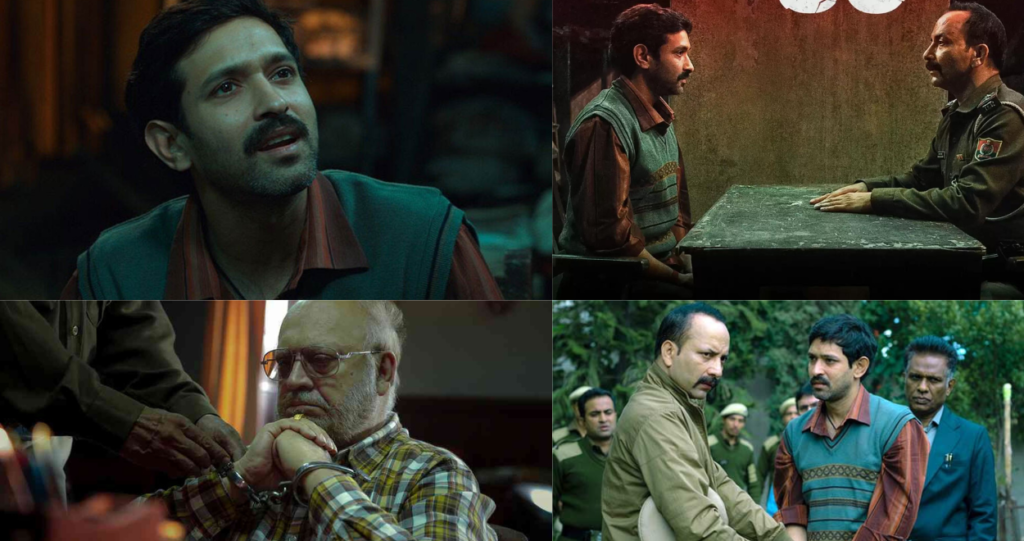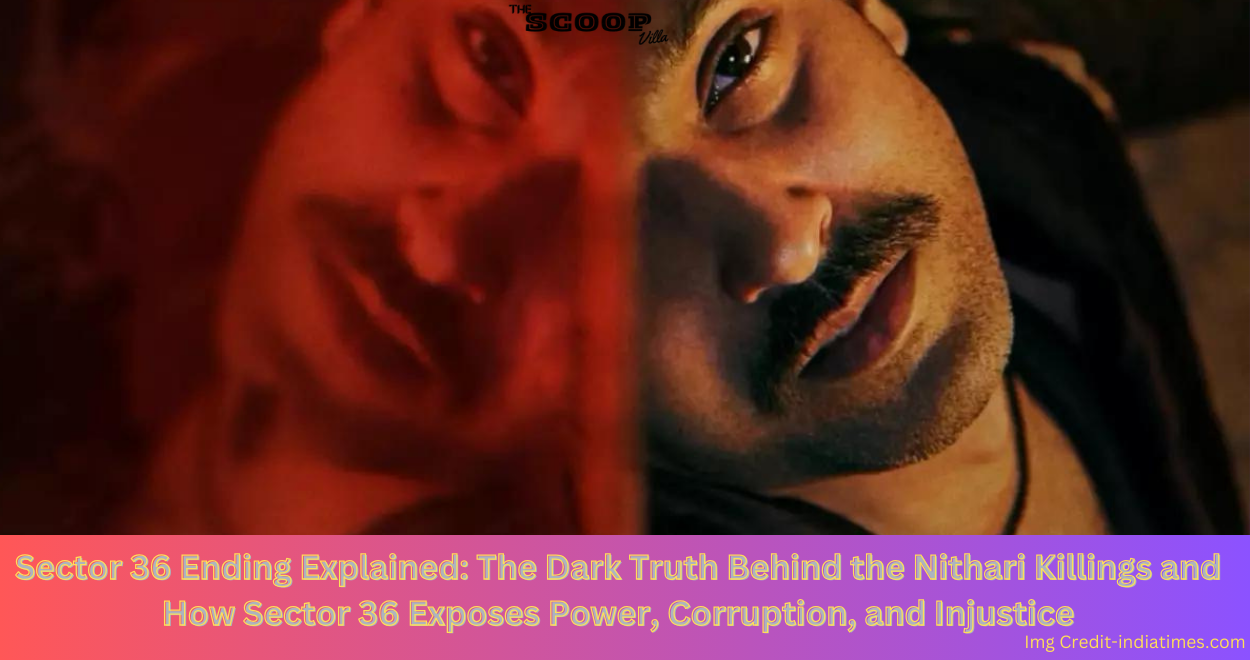Vikrant Massey steps into the frame, with Deepak Dobriyal playing Inspector Ram Charan Pandey, the man chasing down the nightmare. The case? A horror show of cold-blooded killings, sexual violence, and whispers of cannibalism, with Surendra Koli and his accomplice Moninder Singh Pandher at the center of it all.
The Gruesome Nithari Murders: A Crime That Shook India

It was December 2006 when the horrors behind the walls of Noida’s Sector 31 first came to light. The cops found skulls, bones, and scraps of clothes stuffed in gunny bags, dumped like garbage in a drain behind bungalow D-5, right next to Nithari village. More digging turned up the same grim story—skeletal remains scattered across the place.
Most of them belonged to poor kids and young women, all from the nearby slums, all gone missing. The trail led straight to Surendra Koli, a domestic servant who worked for the man in the bungalow. Koli would lure the children with sweets, then kill them.
The things he did next were even darker: necrophilia, rumors of cannibalism. When he was done, he tossed the remains into the ditch. His boss, Moninder Singh Pandher, a businessman with too much money and not enough soul, was in on it, they said. Together, they turned the house into a slaughterhouse from 2005 to 2006.
Sector 36 Ending Explained: Unmasking a Corrupt System

Sector 36 wraps up the way a bad dream does—slow, cold, and unsettling. It’s a story that starts with the truth and ends somewhere darker, based on the 2006 Noida serial killings. The film drags you into the grime, following Inspector Ram Charan Pandey, a cop who’s seen better days, as he digs through a string of child disappearances.
Pandey’s chasing answers, but the deeper he goes, the murkier the line between guilt and innocence gets. By the end, what he finds isn’t just the killer, but the ugly machine that lets these things happen. And just when you think justice is about to break through, power steps in, smirking in the shadows.
In the end, Sector 36 doesn’t let you walk away clean. Prem Singh, the man behind the crimes, may get his due, but the real villain—corruption, power—gets to keep playing the game. There’s hope in the rubble, but it’s slim, bruised, and hard to trust.
Pandey’s Investigation: A Race Against Time and Power
As the case tightens, Pandey—played with grit by Deepak Dobriyal—closes in on the guilty: Balbir Singh Bassi, a businessman with money to burn, and his servant, Prem Singh, played by Vikrant Massey. All signs point to Bassi’s house, a slaughterhouse in disguise, and Pandey’s hell-bent on seeing justice served.
But the game changes. One of Bassi’s musclemen puts a bullet in Pandey, and with that, the case crumbles. The evidence, everything Pandey had risked his life for, goes up in smoke, leaving Bassi free to waltz out of the mess untouched.
Just when it seems like the rich man’s won, a package shows up at Constable Bishnoi’s door. Inside, Pandey’s evidence—everything he died for. It’s a glimmer of hope.
Prem Singh’s Fall: A Tale of Brutality and Betrayal
Bassi walks away clean, his money and connections helping him. But Prem Singh, the servant who helped carry out the bloodshed, isn’t so lucky. The law comes down hard on him, and he takes the fall for his boss’s crimes. A twist as old as power itself—one man gets away, the other rots.
Prem’s story is a dark one. He didn’t just snuff out innocent lives, he shattered them, pulling others into his web of horror. His willingness to go all in, knowing he’d lose everything, paints a grim picture of a man with no line he wouldn’t cross. Depravity like his? It digs deep, far past the point of no return.
The movie leaves you hanging, with Bassi’s fate up in the air and the evidence sitting in Bishnoi’s hands—a sliver of hope, but no promises. Justice doesn’t tie itself in a neat bow here, and the open-ended finish says more than any verdict could. It’s a cold look at the justice system’s flaws, and a sharp reminder that the powerful aren’t easily pinned down.
Conclusion
Sector 36 delivers a chilling exploration of the dark underbelly of human depravity and power’s corrosive influence. By delving into the infamous Nithari case, the film does more than just recount the horrors of Prem Singh’s atrocities—it exposes a system where justice struggles to prevail. The disturbing actions of the characters reflect the broader reality of corruption and impunity, leaving viewers with an unsettling sense of unresolved tension.
While the ending provides a glimmer of hope with Pandey’s evidence resurfacing, it’s clear that true justice remains elusive in a world dominated by those with money and influence. This dark legacy underscores the film’s message: in a world riddled with corruption, justice is often more of an aspiration than a certainty.
FAQs
Q1: How does Sector 36 end?
The film ends on a grim note. Although Prem Singh, the servant, is punished for the crimes, his boss, Balbir Singh Bassi, escapes justice due to his wealth and influence. Inspector Pandey is killed in the process, and it seems that Bassi will walk away free. However, evidence gathered by Pandey is later sent to Constable Bishnoi, offering a faint glimmer of hope that justice might still be served, though the outcome remains uncertain.
Q2: What message does the film Sector 36 convey?
The film lays bare the cracks in the justice system, where power and cash act like a shield for the guilty. Prem Singh’s actions are monstrous, yet the real villain—corruption—slips through the fingers of accountability. In this murky world, justice feels like a whisper lost in a storm, drowned out by greed and deceit.
Q3: Is the ending of Sector 36 open-ended?
Yes, the ending of Sector 36 is open-ended. While Prem Singh faces punishment, Balbir Singh Bassi’s fate remains uncertain. The film leaves the viewer with questions about whether true justice will be served, emphasizing the ongoing influence of wealth and corruption.

